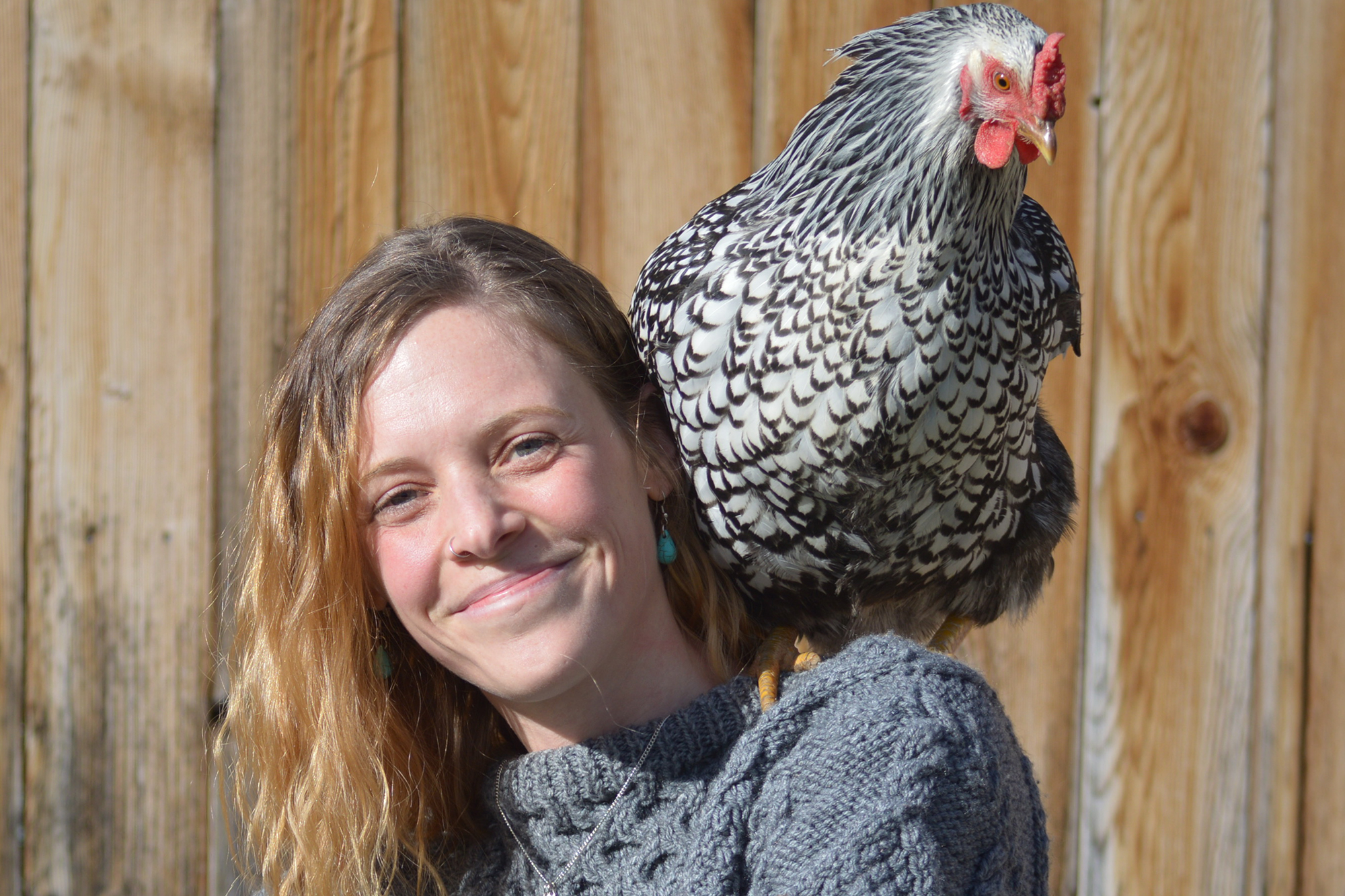
WWJHD?
Few encounter a fer-de-lance snake and walk away unscathed. While working in Costa Rica recent School of Biological Sciences (SBS) graduate Jordan Herman (PhD’20) moved closer to observe a toucan dismembering the green iguana it was having for lunch. When the bird took off and dropped half of it, Herman picked up the iguana’s tail and realized she had nearly stepped on the coiled and camouflaged pit viper at her feet. As the bird returned to finish its meal, Herman stood still, suddenly stuck between an intimidating toucan and the venomous snake. She escaped the dangerous situation by offering up the tail and backing away slowly.
For Herman, this moment earned her “a new appreciation for how cool and terrifying nature can be.”
Herman originally came to the SBS graduate program in 2014 from the University of Minnesota–Twin Cities. Her research has been focused on the fitness consequences that mockingbirds experience when they are co-exploited, how the co-occurring parasites interact with each other, and the roles that host defenses play in these species interactions.
Now a post doctoral fellow in the Clayton-Bush lab, Herman thrives in the outdoors and has always been captivated by birds. While working as a field assistant in the Galapagos Islands off the coast of Ecuador, she became hooked on parasitic nest flies and their endemic bird hosts. This interest, in turn, brought her to Argentina, where she worked on the effects of parasitic nest flies and brood-parasitic cowbirds on their shared host, the chalk-browed mockingbird.
Her passion for the outdoors extends to her adopted home of Utah. When she isn’t backpacking all over the Intermountain West, you can find her spending time in her Salt Lake City garden with her four chickens–Dotty, Penguin, Mungo, and Jerry. Currently, she and her partner Joey have also been treating themselves to sushi takeout from Sapa, a local Asian fusion restaurant where, she says, “you can still order mussel shooters!”
Outside of her research, Herman has also made a lasting impact in SBS where she is grounded in a close-knit community of biologists  with wide-ranging research interests. As a mentor, she has soared by offering strong support and advice to those around her. “Jordan’s unwavering sense of self allows her to be a generous mentor,” explains fellow graduate student, Maggie Doolin (Dearing lab), “and one of the most consistent sources of truth and support I’ve encountered anywhere throughout my life. She is one-of-a-kind,” continues Doolin, “and I’m lucky to have had her welcome me to the SBS grad program for all things life and science.” When asked what the best advice Herman herself has received in graduate school, she replies, “Publish early!” You can find Herman’s publications in journals like Ecology and the Journal of Avian Biology.
with wide-ranging research interests. As a mentor, she has soared by offering strong support and advice to those around her. “Jordan’s unwavering sense of self allows her to be a generous mentor,” explains fellow graduate student, Maggie Doolin (Dearing lab), “and one of the most consistent sources of truth and support I’ve encountered anywhere throughout my life. She is one-of-a-kind,” continues Doolin, “and I’m lucky to have had her welcome me to the SBS grad program for all things life and science.” When asked what the best advice Herman herself has received in graduate school, she replies, “Publish early!” You can find Herman’s publications in journals like Ecology and the Journal of Avian Biology.
Clearly an expert in field research, Herman uses her knowledge to give back to her community. “Given the amount of field research, field courses, and outdoor recreation that happens in SBS, our community has a major need for wilderness preparedness,” she says. This need gave rise to Herman’s involvement in developing the biennial subsidized Wilderness First Aid course which is available to students, faculty, and staff in the SBS. A future goal is to expand this program to more personnel across the College of Science.
Jordan Herman, PhD, is truly a force of nature. Next time you’re stuck between an intimidating toucan and a camouflaged pit viper, remember to ask yourself, WWJHD?: What would Jordan Herman do? The School of Biological Sciences is indebted to Jordan Herman. She will always have a place here among the wide variety of birds and lifelong friends nestled at the base of the Wasatch Mountains.
by Andy Sposato
Andy is a graduate student in the Gagnon lab and co-founder of the LGBTQ+ STEM Interest Group in the College of Science.